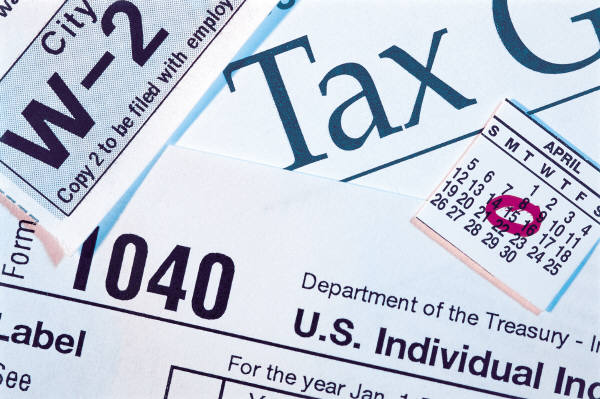|
"Taxes," said the American jurist Oliver Wendell Holmes, "are the price we pay
for civilization", while many people may argue about that price tag, sometimes
vehemently, official tax authorities still need to collect those taxes, in the
case of the USA - Internal Revenue Service (IRS), that collection job is now
made possible by XML.
 Preparing annual tax returns was traditionally -- and
literally -- a paper-and-pencil exercise. For decades, the IRS organized tax
returns around paper forms. The IRS still identifies the electronic documents
taxpayers submit by their traditional form number, which most taxpayers
recognize and use in their own language as shorthand. Many Americans, for
example, routinely refer in conversation to the "1040" -- IRS Form 1040, the
standard personal tax return -- and "W-2," the annual W-2 form giving a
statement of earnings and withholdings that employers provide to their workers. Preparing annual tax returns was traditionally -- and
literally -- a paper-and-pencil exercise. For decades, the IRS organized tax
returns around paper forms. The IRS still identifies the electronic documents
taxpayers submit by their traditional form number, which most taxpayers
recognize and use in their own language as shorthand. Many Americans, for
example, routinely refer in conversation to the "1040" -- IRS Form 1040, the
standard personal tax return -- and "W-2," the annual W-2 form giving a
statement of earnings and withholdings that employers provide to their workers.
But now the process of filing tax returns is more often than not, conducted
electronically, and for good reason.
In 2011, the IRS processed more than 145 million tax returns. Of that
number, more than 112 million returns, or 77 percent, were filed
electronically.
Businesses were the first electronic filers
Use of electronic filing of personal tax returns is a fairly new phenomenon for
the IRS, but businesses and not-for profit organizations have had the option of
electronic filing since 2004. In that year, the IRS started phasing in its
Modernized e-File platform across its various tax returns, beginning
with filings for corporations (form 1120) and tax-exempt organizations (form
990; even groups that are exempt from paying taxes still need to file a
return).
Businesses, of course, have many more dealings with tax authorities than the
annual corporate filings, and IRS devotes considerable attention to electronic
business interactions, with XML at their core. IRS provides an entire page of
XML schemas
and related resources for:
1. Employment taxes
2. Tax-exempt organizations
3. Estates and trusts
4. Partnerships
5. Individual contractor and wage payments
6. Corporations
7. Political organizations
8. Employee benefits
9. Excise, or consumption, taxes, for example those imposed on telephone charges or hotel stays.
Individual state governments in the U.S. have not been far behind the IRS in
applying XML to their tax returns, since many states base their returns on IRS
documents. A task group of ANSI`s Accredited Standards Committee X12 focuses on
harmonizing individual state tax return specifications: the Tax Implementation
Group for E-Commerce Requirements Standardization (TIGERS).
XML in the message, not just the payload
XML plays a key role in the
transmission of tax filings, as well as the tax returns themselves.
Many tax software packages and third-party tax return specialists, such as
accountants or services like H&R Block, build in electronic filing to their
software, and IRS provides specifications for the
application-to-application (A2A) transmittal of those returns.
IRS has defined a collection of individual message specifications, including
acknowledgements, for A2A interactions between the IRS and tax software. Those
specifications include embedding the tax returns as payloads, which can be XML
or XML with PDF attachments, in a SOAP message. Security is provided through
the OASIS Web Services-Security and Security Assertion Markup Language (SAML)
standards.
IRS provides a software development kit for its A2A trading partners,
available on request from the IRS.
In case you`re thinking Americans are doing the IRS some big favor in filing
their tax returns electronically, many individual taxpayers have a clear
financial motivation for doing so: faster tax refunds. In 2011, more than 109
million taxpayers last year
received refunds from the IRS, where payroll taxes withheld from their
income during the year exceeded their tax liabilities.
And the faster those returns are filed and processed, the faster taxpayers can
receive their refunds. Those refunds, in total and individually, were hardly
small change; in 2011 they totaled $318.5 billion, or an average of $2,913 per
refund.
Alan Kotok is editor and publisher of the
Science Business news blog, and author, with David Webber, of
ebXML: The New Global Standard for Doing Business on The Internet (New
Riders, 2001).
|


